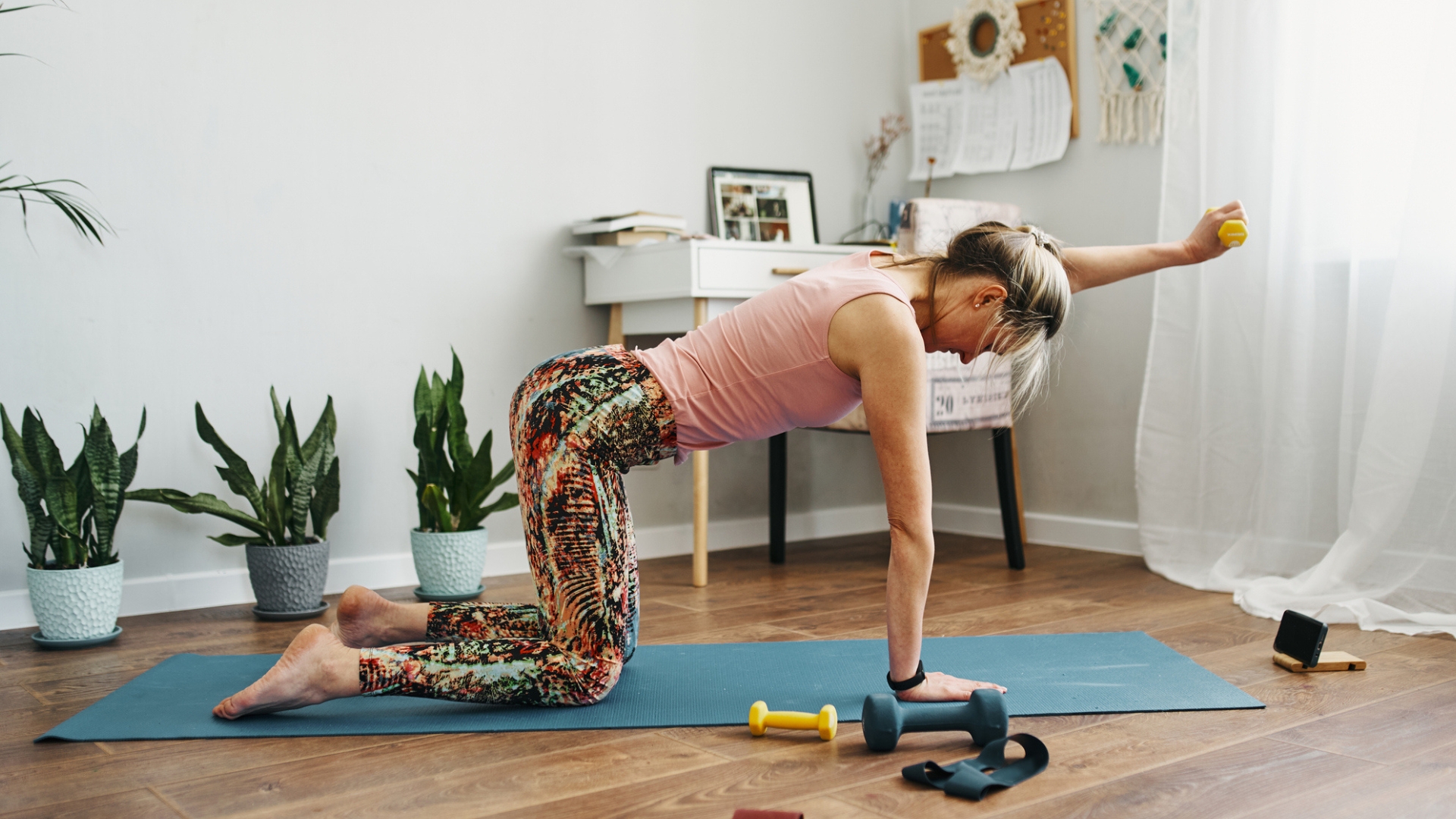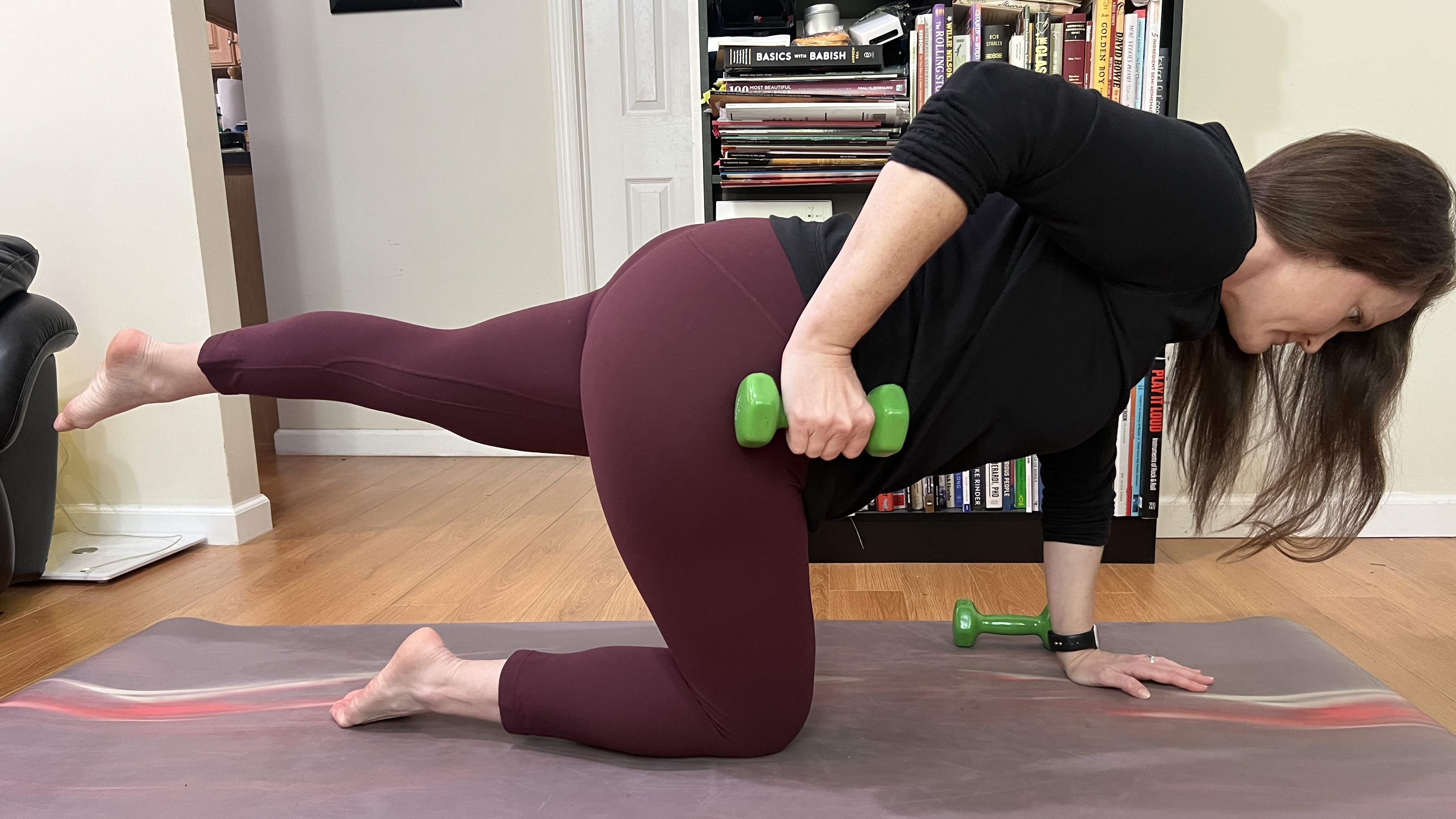
I usually gravitate towards heavy dumbbells and barbells for my upper-body workouts, but some recent shoulder pain has made me pause my heavy lifting. In search of something gentler on my joints, I came across Kristal Ruiz’s "killer arms" Pilates routine on Instagram.
Don’t let the name intimidate you—this upper-body workout is relatively easy to follow and suitable for most fitness levels. You’ll even get some glute, core and hamstring work along the way.
For this workout, you’ll need a set of light weights (I used 3-pound dumbbells), and a yoga mat for support.
How to do the "killer arms" Pilates workout
You’ll be in a tabletop bird-dog position for the entire workout, on the floor with one hand and the opposite knee anchored on the mat, while the other arm and leg will be performing the exercises.
Ruiz suggests performing six to eight repetitions on each side for each move:
- Low row
- Triceps kickback
- Bend and extend
- Lower and lift
- Arm swing
- Pulse
What I found

The repetitions were too low
Typically, Pilates workouts use higher repetitions (10-15 or more) to effectively work the muscles. I was a little surprised that Ruiz recommended only six to eight repetitions per exercise.
These lower rep counts weren’t enough to fatigue my muscles so I increased the repetitions to 20-25 on each side (30 for the pulses) to feel the burn I was looking for.
That said, I’ve been exercising consistently for over 20 years. If you’re newer to fitness, six to eight repetitions might feel like an appropriate challenge. Listen to your body and adjust the repetitions as needed.
My core and glutes were sore too
After increasing the reps, I started to feel the workout’s intended effects— especially in my triceps. The next day, they were sore, similar to how I’d feel after doing heavy tricep dips or extensions.
Surprisingly, my glutes and core muscles were sore too. This made sense as I was holding a bird-dog position throughout the workout, working my core. And the pulses challenged both my triceps and glutes.
My back felt strong
Two exercises in particular—the low-row and lower and lift—targeted my back in a new way. I’ve done my fair share of rows in the past but working with lighter weights and higher repetitions allowed me to focus on proper muscle engagement and work until failure.
The lower and lift (essentially a reverse fly) also worked wonders. Normally, this type of movement tightens my neck, but using lighter weights kept my neck pain-free while working all the right muscle groups.







